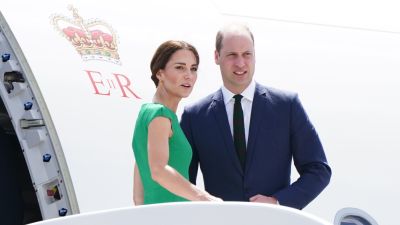Insight
William and Kate's Caribbean Tour: What went wrong?

ITV News Royal Editor reports on a Royal tour plagued by controversy and criticism
The Duchess of Cambridge joked that she and Prince William had brought the British weather with them to the Bahamas as they arrived at a school in a huge downpour on Friday.
But the weather has been the least of their problems.
They are spending two days in this Commonwealth Realm at the end of a week-long Caribbean tour that’s proved to be more than a little bumpy.
So what went wrong?
William and Kate would have expected some turbulence in Jamaica where there is a heated debate about reparations and slavery and about becoming a republic.
Then campaigners for becoming a republic said William and Kate were simply evoking images of the colonial past when the duke - in his military tropical uniform - rode on top of a Land Rover with the duchess.
There were protests over land rights in Belize at a cacao farm the Duke and Duchess were due visit.
And they were criticised – although in my opinion unfairly – after a picture showed William and Kate shaking hands with Jamaicans through a wire fence.
Given that Raheem Sterling had done the same – and it was simply a perimeter fence around a football pitch – it showed how context can be totally lost on social media (and they did a walkabout moments afterwards in the street – with no fences).
You can see why this Royal Tour has been far from straightforward.
But what is a straightforward royal tour now? And what place do they have in 2022 when members of the Royal Family, chosen by dint of birth, tour former colonies thousands of miles from home?
The truth is, things have changed since the Queen and Duke of Edinburgh toured the nations of the Commonwealth , when the Monarch was still travelling overseas.
I recall Prince Harry, more than once, looking distinctly uncomfortable as he was forced to sit in the VIP chair, the cameras trained on him, as he watched traditional ceremonies and dancing.
Perhaps it’s a moment to ask what these tours are for and what benefit they bring for either side.
Be in no doubt – the schools or projects or charities which have hosted William and Kate have considered it a great honour.
They’ve enjoyed the attention the visit brings, the support they have given and would have the royal visitors back in a flash.
The family who ran the cacao farm in Belize – which replaced the one with the protest – could not have been happier to host William and Kate and, through them, show the world what they do so well.
A school which focuses on the early years, was delighted that Kate, who focuses much of her work on the development of children aged 0-5, came to learn about their work, share her knowledge and make a speech to staff.
The barrier reef projects in The Bahamas and Belize would give much the same response about William’s work on these environmental issues.
But there have been moments too when the tour has looked like it belonged to an era most of the world left a long time ago.
“It looks like something from the 1800s”, one campaigner in Jamaica told me of William and Kate’s ride in the Land Rover.
Should William have acknowledged the republic debate and told his audience that he and his grandmother, The Queen, would support Jamaica, or Belize or The Bahamas (which she does) in whatever decision they choose to make about their constitutional futures.
In Jamaica, a country which saw the largest number of slaves in the British West Indies, some questioned the wisdom of William talking about the Windrush generation without acknowledging that, it too, was a stain on Britain’s more recent past.
And when the staff of the Royal Household is almost exclusively white (as I should point out was the media pack covering this tour and the military personnel flying us all around) it gives the impression that this institution has not moved on.
Since the Black Lives Matter campaign, and the pandemic, everyone is looking anew at our relationships with the past and how that impacts the present.
People might forgive The Queen for appearing out of date, or indulging herself on visits of memories of times gone by.
But she is nearly 96 years old and brings with her many, many years of accumulated respect and experience.
Newspapers will write about a “Tour de Farce”, they might call it a “tone-deaf tour”, but when William and Kate debrief this trip with their staff, they will need to examine why some things went wrong and what they can do differently.
Always nodding back to outdated traditions leaves the Monarchy open to the charge that the institution is out of date and backward-looking.
What is the point of royal tours in 2022?
Royal aides will need to find a way to reorientate these visits to Commonwealth countries and beyond, so that they focus overwhelmingly on the future and not the past.